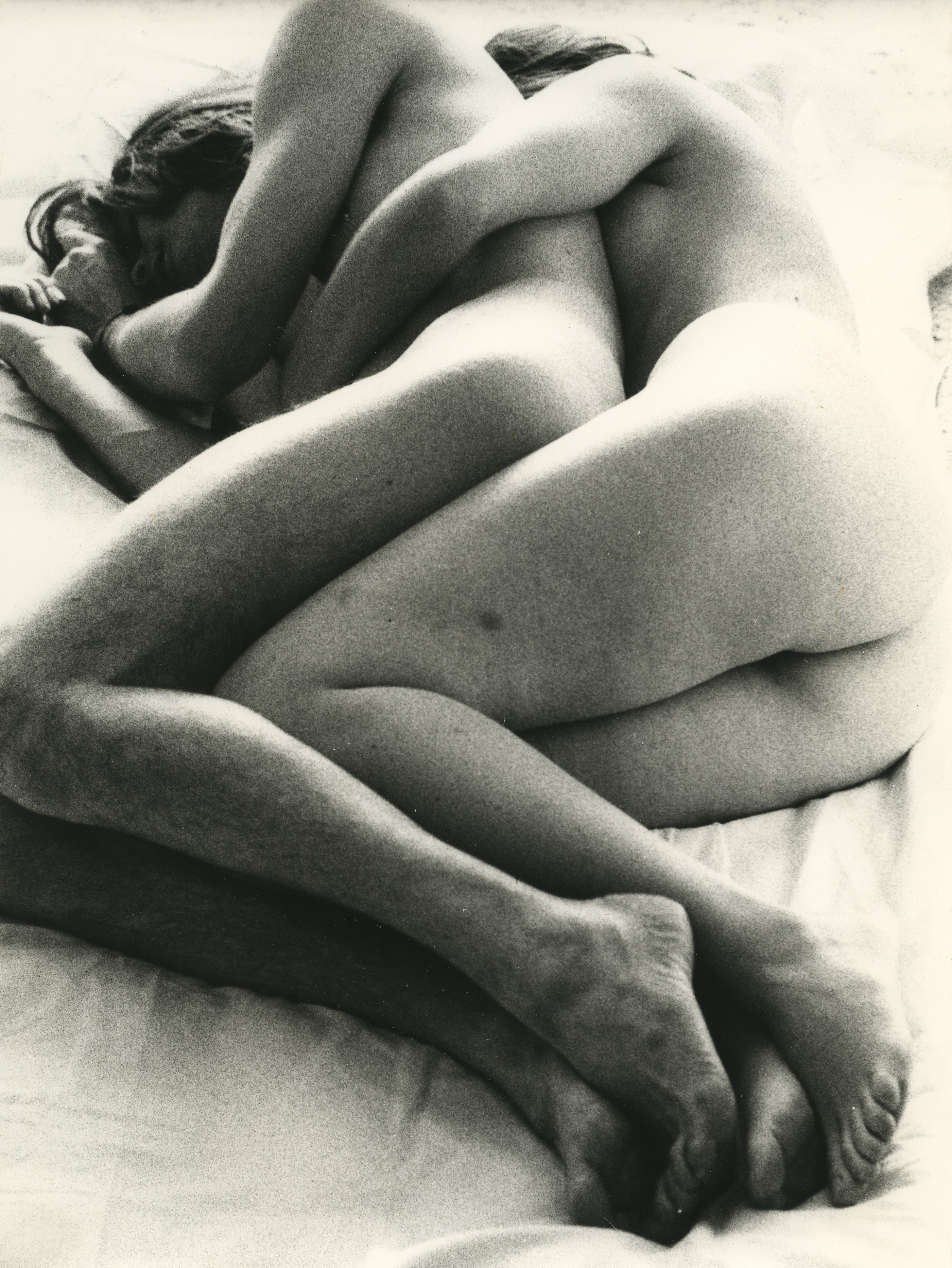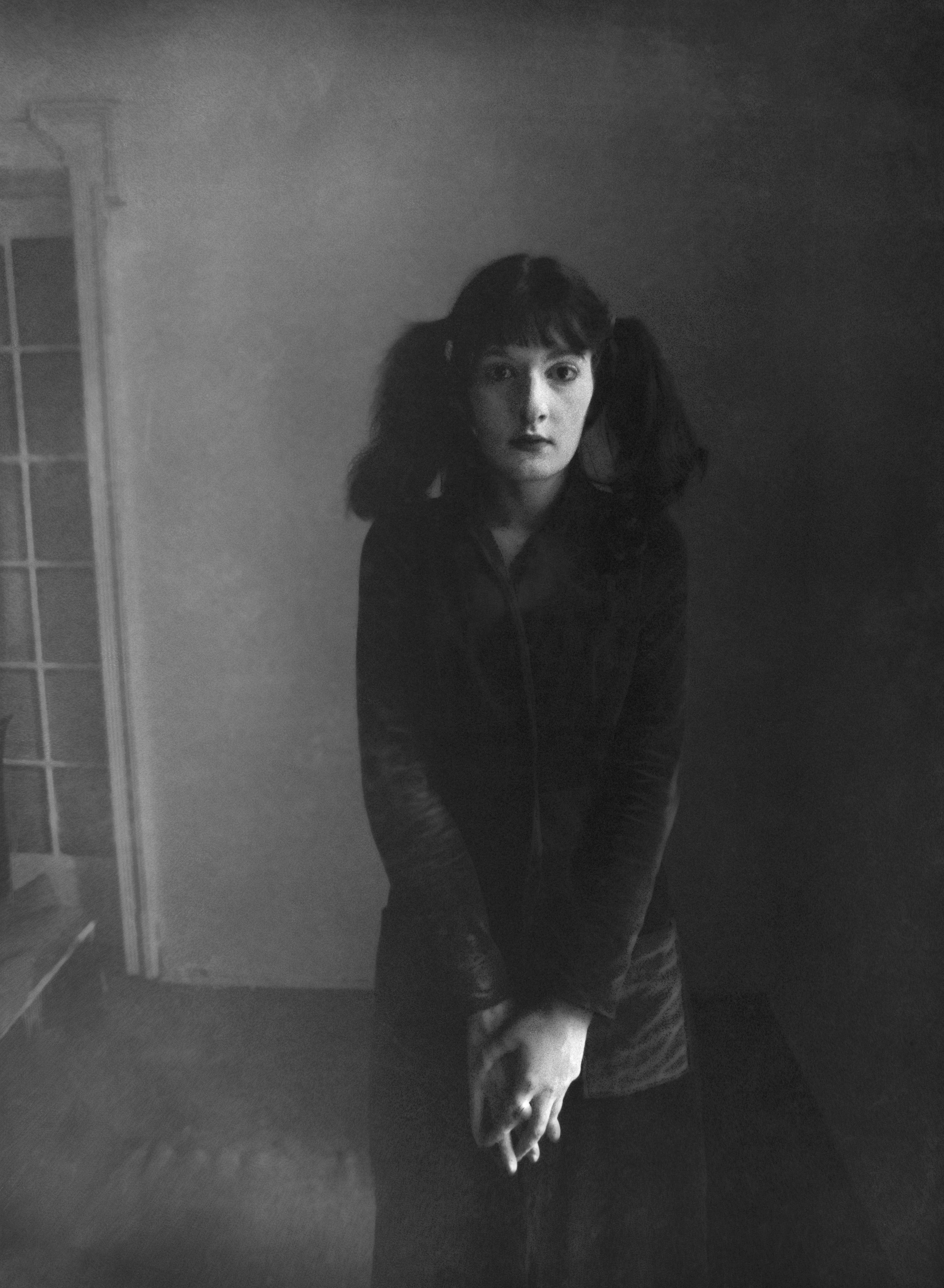Philippa Snow and the Self-Injury of Marina Abramović
The author of Which As You Know Means Violence (2022) speaks to Ella Slater ahead of Abramović’s retrospective at the Royal Academy this year.
Marina Abramović’s career in performance art began in the early 1970s in Belgrade, Serbia. Her oeuvre involves pushing herself to the edge, both physically and mentally; it’s hard to imagine a more potent presence in the field of art as endurance. Controversial though she may be, having submitted herself to starvation in The House With the Ocean View (2002) and flirted with death in Rhythm Zero (1974), 2023 marks the opening of the first major exhibition spanning her life’s work in the UK: an expansive retrospective at the Royal Academy. To mark the occasion, I spoke to Philippa Snow, art critic and author of Which As You Know Means Violence (2022) – a book about self-injury, both for entertainment and enlightenment – to elucidate the work of Abramović.

Abramovic and Ulay living in their Citroën Van, c. 1977/78. All images courtesy: © the artist and Marina Abramovic archives
ELLA SLATER: First impressions seem like a good starting point. What was your first impression of Marina Abramović, and how have your thoughts and impressions evolved?
PHILIPPA SNOW: I went to art school, and I had a tutor there who really turned me on to what I would broadly describe as feminist body art. At the time I was making work already circling around the idea that even a conventionally "sexy" female body could be used for subversion. I soured a little on Abramović around The Artist Is Present (2010) because she seemed so keen on commodifying herself, and I look back and wonder whether or not I was right to feel turned-off by that. Now I recognise that a lot of Abramović's eagerness to present herself a certain way is inextricably linked to ageing. Revisiting her for the book though, I felt as though a lot of what she does clicked into place, because my selection of artists had more to do with a kind of gut instinct, than it did with trying to create a comprehensive history of violence in art and culture. I think her pieces are often very much about that: feeling, or the exchange of energy, rather than thinking.
ES: On the subject of your book – what drew you first, to self-injury as an artistic practice, and second, to Abramović within this methodology?
PS: Discovering comedic actor Paige Ginn’s falling videos on YouTube was a big catalyst for me, because I thought they said something interesting about gender and the value, in social and financial terms, of the female body. Ambramović felt like a natural fit. There's a Judith Thurman profile of her that came out in the New Yorker in 2010, and I avoided reading it before I wrote the book because I didn't want to absorb anything and unthinkingly cannibalise it, but I read it this morning and Thurman makes a brilliant observation that Abramović's relationship with feminism is not political, but mythic. That's why I was interested in writing about her. She funnels heterosexuality, and the experience of being female, into these kind of three-dimensional, action-based fables.

Abramovic and Ulay somewhere west of Lake Disappointment, Australia, 1980
ES: I read an account of The House With the Ocean View (2002) earlier in which the writer watched people returning every day of the performance to engage with Abramović in what seemed like a reverential manner. It reminded me of religious imagery from Western art history in which suffering is depicted as a way to induce piety…
PS: I make reference to martyrdom in the book, and it's difficult to think of another artist who is as much of a cult figure as Marina Abramović. She herself has said that she wants the actions she performs to feel “legendary”. She adopts a more stoic persona when she’s performing; there's this interesting tension where she embodies God and a martyr at the same time, because she's actively suffering (making a public sacrifice) but she's also knowingly self-mythologising. Pain can cause an ecstatic feeling that might be interpreted as religious, but sometimes seeing others willingly in pain can produce a similar feeling, because we experience empathy and relief and, in a strange way, awe.
ES: I find the idea of the cult around Abramović interesting, and the idea that she is using the male gaze to reveal its own depravity (for example in Rhythm Zero [1974]).
PS: I wonder if the anger of male audience members during Abramović's Rhythm Zero was a certain frustration in a woman being brave enough to say: here's the thing you want so badly, do what you like with it. Suddenly the thrill of theft and coercion has disappeared, and there's no fear on her part.
ES: I guess that's what's so radical about a woman hurting herself in a way that men have historically assumed as their right to do to her. I also wanted to ask you more about Abramović's work with Ulay – what do their collaborative works say about the power dynamics within a heterosexual relationship?
PS: They both describe their first meeting as a coup de foudre, and each of them appears to have been vital to the other's development as an artist. They exemplify the tension that exists in a lot of couples where both are artists, because on the one hand they have been drawn to each other because of their mutual passion and brilliance, and on the other they are in competition even when collaborating.
There's no more perfect Ulay-Abramović work for me than Rest Energy (1980); the piece is predicated on both of them maintaining that perfect balance so that the arrow is never actually let loose, because it's beautifully elucidative of the way a relationship is about that—both of you keeping the correct tension to avoid things exploding into pain—but also, notice that Abramović is the one who has the arrow aimed at her heart.
ES: Another aspect of Abramović's work which is often overlooked, but which you elucidate in the book, is her humour.
PS: At a party I had around the launch of the book, the performance artists Ryann Donnelly and Nicol Parkinson recreated the Abramović and Ulay piece Light/Dark (1977), which is the one where they are face to face and just slapping each other in turn, and it was so interesting to see the audience react: people were gasping, then laughing, then gasping, then laughing. It's durational slapstick, basically, and when it runs for long enough your brain and body loosen into it and react in this pure animal way. And it's another piece about love, I think—this mutual agreement to just keep hurting each other over and over. That in itself is quite funny.
ES: Abramović and Ulay’s last piece together, their trek through the Great Wall of China, has to be the most spectacular breakup ever.
PS: That's the beauty of two extra people being in a relationship—they were never going to just mutually hand over the requisite boxes of forgotten stuff, it was always going to be An Event.
ES: Artists like Abramović, and Carolee Schneemann, and Hannah Wilke, and others who used their bodies as a medium, were sometimes branded as narcissists and monsters. Is humour important in both dispelling that categorisation, and harnessing the connection with the audience that Abramović spoke about so much?
PS: All three of those women could be funny, and obviously men would never be seen as narcissistic or monstrous for making the same kind of work. There's a sort of pervasive idea that we aren't supposed to find art funny, which is bullshit. I wanted the book to be funny in places too, because I wanted to achieve the same thing Abramović achieves when she makes those deadpan jokes: to say, I know that the point I'm making here is serious to the point of absurdity but also, I am very much aware of that and I encourage you to notice it.

Abramovic wearing clothes she made out of curtains, Belgrade, 1960
ES: I loved that about the book. That your essays weren't just academic, or International Art English, or super formal. I think it makes art a lot more accessible, and surely art isn't art without an audience to look at it.
PS: Absolutely. I worked at an art magazine for a long time and have always been irritated by IAE because I don't see the point in deliberate obfuscation of a medium that is supposed to be about elucidation and clarity. Also, I think all the most interesting things we can draw out of art via criticism have a very direct relationship to human life, whether it's social life or emotional life or whatever, and you don't need to know the intricacies of art history to know how a piece makes you feel, or what it reminds you of in your own experiences.
ES: The idea of accessibility within art leads me to my next question, which is about Abramović's ‘re-performances’ of other artists’ works, often involving self-injury. She argues this gives them more longevity, and exposes them to new audiences. What do you think about the implications of Abramović injuring herself as part of somebody else’s concept?
PS: I think it automatically gives the piece a different meaning, and that in and of itself adds value. There is some controversy in general around the idea of restaging performance works, and I know there are practitioners and critics who believe that the repetition of a work nullifies its meaning, and that the significance of performance art springs from its ephemeral status. Abramović says that restaging is an act of generosity, and that letting a work die unseen is one of selfishness.
ES: Finally, I’ve heard rumours that in Abramović’s upcoming retrospective at the Royal Academy, she will present something along the lines of a fountain of her own blood.
PS: There have certainly been pieces where she's drawn blood before—one of the Rhythm performances sees her jabbing a knife between her fingers until she's cut herself twenty times, for instance, and in Lips of Thomas (1975), she carved a pentagram into her abdomen. If the blood fountain work happens, it will certainly be the most bombastic use of her blood for an artwork to date. I have to say I'm somewhat intrigued by the idea. It's a very Abramović idea: it's dramatic, it's Biblical, its cinematic, and of course blood and the (cis) feminine are connected in fairly intimate ways. And it's a return to something quite violent after a fairly long period of concentrating on energy transfer!
‘Which As You Know Means Violence’ by Philippa Snow was published by Repeater Books in September 2022. In Spring 2023 Snow’s single-essay book of art criticism will be released with Mack Books.
Marina Abramović, the exhibition, will be on display at the Royal Academy, London, from 23 September to 10 December 2023. ♥
Published in Intra Venus, Issue One, Summer 2023